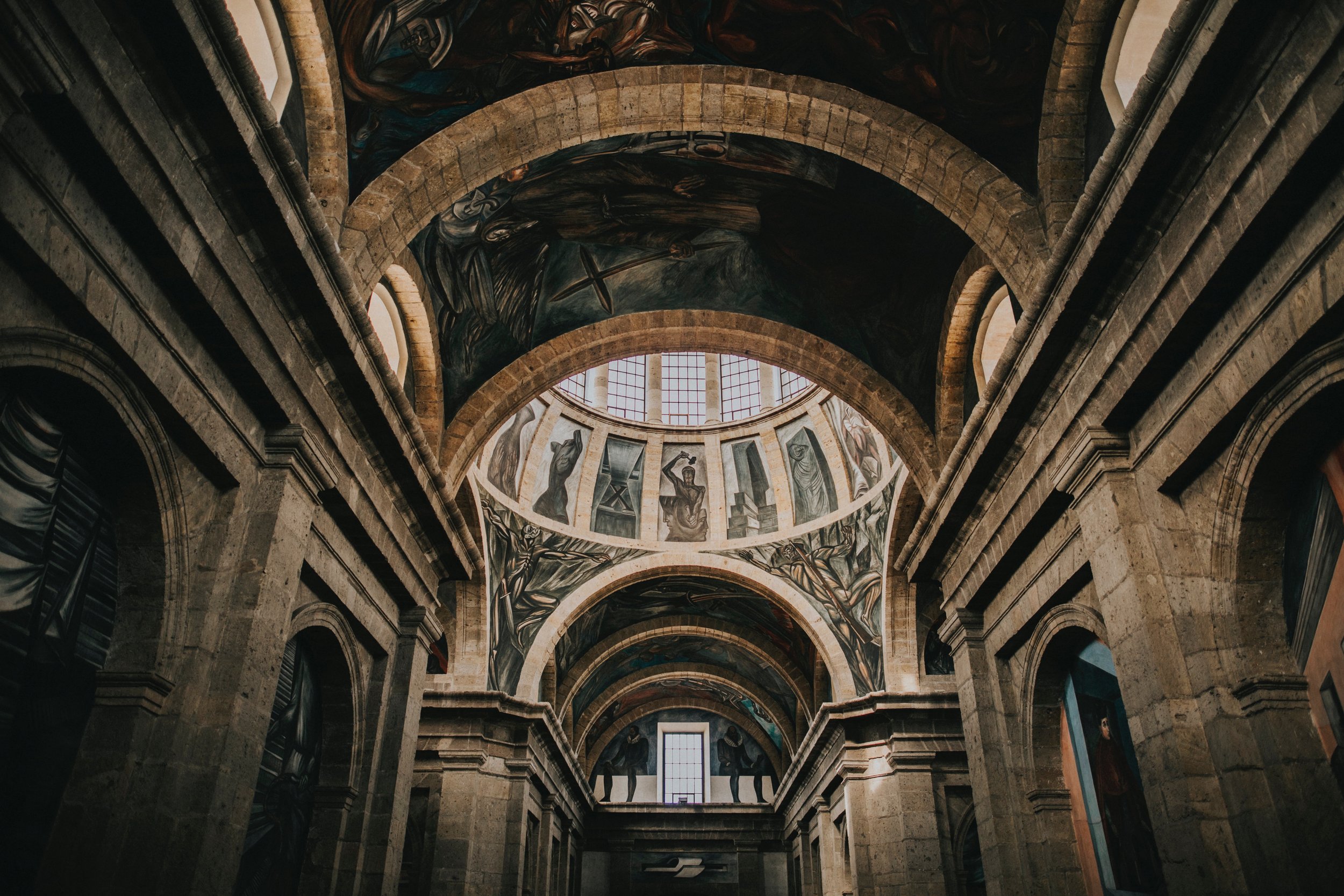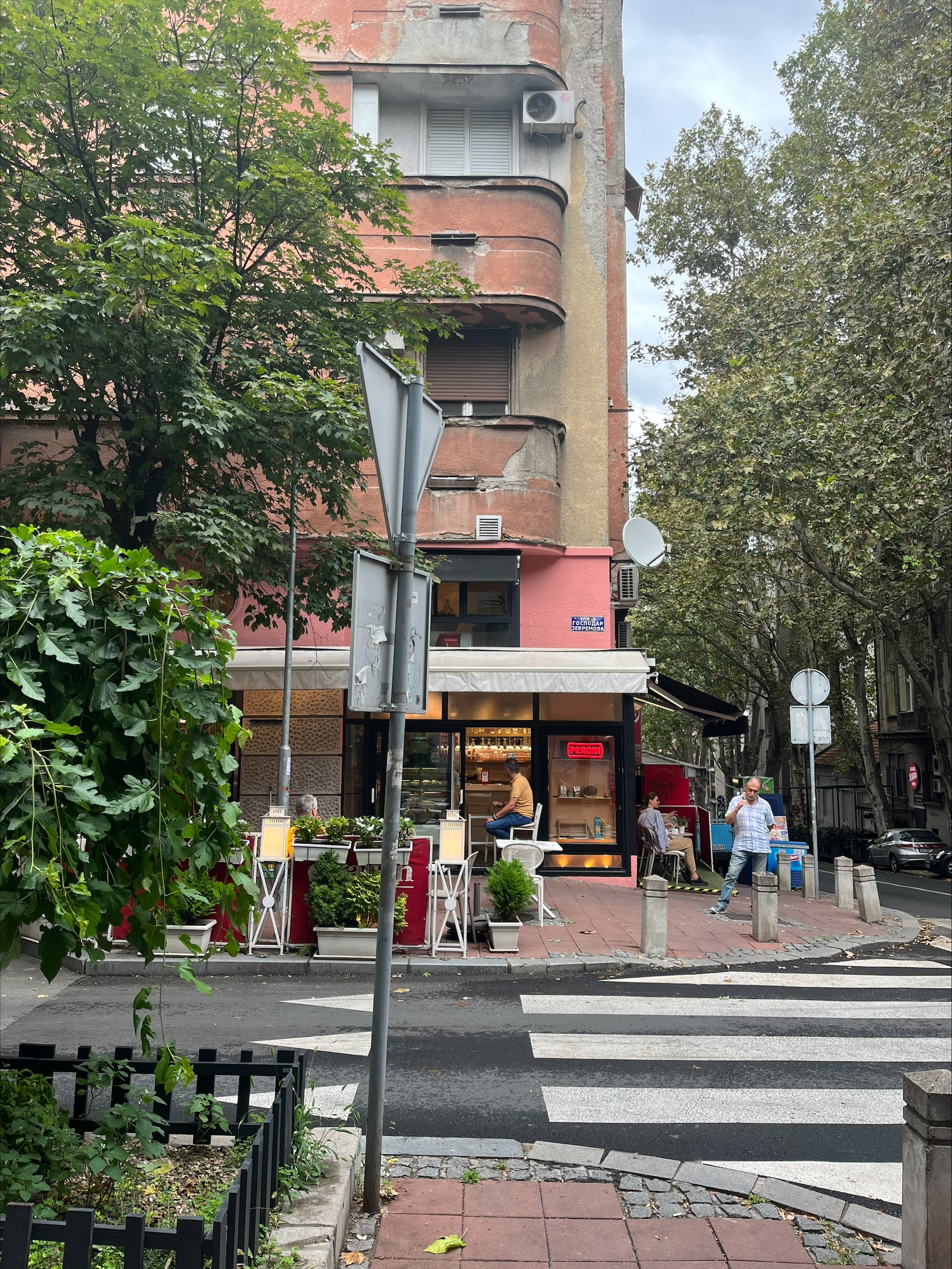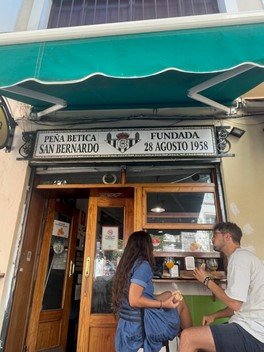
Postcards
Guadalajara Mexico
Personal odes to the places we‘ve loved, postcards are your antidote to the non-stop checklists and blur of the fast-paced travel lifestyle: strip back the glamour, slow down and hear real, human stories of the world.
Postcard from Belgrade
Mid-afternoon in Belgrade, everyone drinks their coffee outside. Even in this week of September, when summer is slipping away and the emergence of autumn is in the wind, streets are lined with outdoor seating. As the afternoon deepens, these spots will transition from cafes to bars. Wooden tables and chairs balance on a crooked pavement. Crumbling walls painted pink display messy Cyrillic at a cafe on the corner of Studentski Park. Here my friend and I drink our coffee whilst old men shout into the phone and other young friends exchange words in between breaths of smoke. This is the hour where brutalism is bathed by a golden haze.
Belgrade is a city of many lives. On one bank of the Danube stand soviet blocks plastered with peeling billboards. On the other, a half-city that resembles Vienna or Budapest - church roofs dispersed amongst old European buildings and tram lines. There's a familiarity to covering my shoulders to enter St Michael’s Cathedral or riding a crowded red tram through the city. I am accustomed to the kiosks selling magazines and cigarettes. There’s unfamiliarity in Cyrllic signs, smoking indoors, bus station fees and murals that declare ‘kosovo is serbia’. I am conscious of my ignorance as an outsider.
These epochs of history are visible in fragments. One piece lies in a socialist themed restaurant, where a constellation of red stars lie amongst strings of garlic and stacks of espresso cups. This past also remains in the maps, aeroplane tickets, badges, military hats and election posters that have made this time capsule, and again in the elderly woman who sells Lenin pins and old passports. Her shop is not far from the Bajrakli Mosque, a gesture to another past of Belgrade’s Ottoman rule. The weight of the past consumes me most overwhelmingly in Tito’s Mausoleum, a white building with marble walls adorned with eulogies, photographs of renowned visitors and letters of sadness from Yugoslavian schoolchildren. I find a strange peace in the untouched - this room feels like a portal taking me back forty years, the unchanging tomb boasts stillness amidst the endless flux of visitors.
And Belgrade is certainly moving. As the sun sets, us guests are seated on the stone steps of the old hostel building. We are connected only by chance. Dusk approaches and we get ready to cross the river towards the flickering neon lights of the party boats that emerge with the night. Amongst the music and fuzzy from the rakija served at dinner, we dance with Belgrade and I think of the wall of photo booth strips I saw displayed in the contemporary gallery earlier on my trip: friends smiling in fur hats and thick winter coats, a couple holding up their newborn baby to the camera, faces concealed behind costume glasses all stamped December 1988. I think of the children, now adults, who once wrote those letters to Tito, and the old woman selling memorabilia in her antique shop. They power Belgrade as it flows between histories, and I, an outsider to memory, try to find my own place within this city.
The serenity of Sevilla; a city founded on the warmth of its people
With her personal experiences in the city of Seville, Rebecca Turner reflects on what we can learn from Sevillian lifestyle
At the Plaza de España
The chaos of life can be gorgeous and enticing. We are all guilty of rushing between the vibrancy of never-ending social plans, and intensity of our rewarding workloads, ending in a drastic burn-out of exhaustion. Not to mention the restraint of emotion that comes with this way of living; everything is so rushed that we are scarcely given the time of day to think about how we feel. It is becoming increasingly evident that a lifestyle like this is far from sustainable, and as we collectively seek refuge from such a frantic culture, who better is there to look to than the worldwide professionals- the residents of Seville? I was lucky enough to master the escapism of the Andalusians this summer with these very people.
Upon arrival, I was met by the sweltering heat of the Andalusian capital, along with its undeniable beauty. The gorgeous exterior of the city is most obvious in its notable sights- the Royal Alcázar, the Plaza de España and the Giralda, to name a few, - which are characterized by their Moorish and Gothic roots.
Stepping into sites like the Royal Alcazar was like entering into a conversation with Spain’s history. Finally seeing the location in which so much of the worlds, let alone Spain’s, past was shaped, was hugely emblematic. Not to mention, the striking site of the Plaza de España, and the picturesque, winding streets of the Barrio Santa Cruz (the Jewish quarter). But this wasn’t what I remember best from my trip to Seville.
No matter whether I was getting on the tram to the city centre or getting a taxi from the airport to my accommodation, the way in which Seville’s residents interact with life was unmissable.
My first stand-out experience of this was within the first few hours of arriving in Seville - sat at a small bar eating lunch, as we waited for our hotel check-in. At a first glance, the bar didn’t seem like it was anything particularly special, but once seated, its charismatic community was flagrant.
Located in the tranquil neighbourhood of San Bernardo, this bar was decorated with intricate tiles, teaching any customer that it was founded in 1958, and that it was known as ‘Peña Betica San Bernardo’. Although our wonderful waiter, who revelled in a conversation of broken Spanish and English with my parents, added to the atmosphere, it was through observing the other customers that I learnt the most.
At the Bar ‘Peña Betica San Bernardo’
In front of me were a couple, exchanging words which seemed to relax one another as they leant into the serenity of breaking for lunch; not an indulgence but rather a necessity. Elsewhere, a solitary older man sat on his moped reading a novel, pausing momentarily to look up at his surroundings and the bar facing him, then once again engrossing himself in whatever material he was reading that day.
Once I had noticed them, I couldn’t stop observing the people around me, and noticing these similar characteristics of peace and contentedness.
It’s not just the peace of Sevillan residents which contributes towards their character. It’s also their ability to express and embrace emotion, whether this is in greeting one another, or in art form, such as the flamenco. Almost everywhere you go, you are greeted with an “Hola, guapa” (Hello, pretty), an affectionate Spanish term of endearment, accompanied by wholehearted smiles, and not by ulterior motives. This presents you with an inferred permission to feel comfortable with someone you met so recently, and the flamenco most certainly feels like the personification of a warm embrace with these people whom new connections have been formed with.
Whilst ambling through the calles (streets) of Seville, it is undeniable that you will be met with various flamenco encounters, whether this is dancing, singing, or a combination of both. The first of these occurred just after I had eaten the most succulent Solomillo al whisky (Andalusian pork cooked in whisky) in the Barrio Santa Cruz, which was followed by a first glance at the Plaza de España. I had only been exploring this landmark for a few moments when, suddenly, the landscape before me lit up with the dulcet, yet simultaneously impassioned tones, of the flamenco singer, and the presence of two striking dancers. I was immediately captivated by the intensity of the art and the silence befallen on the audience watching it.
Flamenco performance at the Plaza de España
The flamenco performance which still frequently repeats itself in my mind, however, was in the Museo del Baile Flamenco (Flamenco Dance Museum). Each and every performer’s personality shone through in their flourishing display. Compelling facial expressions of both joy and anguish, along with songs performed by voices heavy with sentiment, were accompanied by the intricacies of the footwork of the dance. It is hard to explain the sensation that watching such a spectacle can bring to you; I couldn’t last five minutes without tears rolling down my face.
So perhaps you will visit Seville to see its UNESCO sites, to try a new tapas, or simply to tick it off of your bucket list of travel. All of this is normal, and perfectly commonplace. However, to even consider returning back home and saying you have experienced Seville without interacting with and observing the culture of its people, would be a disgrace to the beauty and charisma of this fine city. The people are the foundations of Seville.
All images belong to the author, unless otherwise stated.
Postcard from Amsterdam: through a half-opened window
In the first of CLC’s Postcards, Alex Levy evokes the distinctive charm of the Dutch capital through a reflection on memory and place.
Spiegelgracht, Amsterdam (Image author’s own)
It’s a strange sentiment, to feel an affinity with a place you left long ago, and not unlike that intangible bond that comes about with a university town. You may no longer stumble home in the dark down familiar streets; the bedroom where you spent so many hours, thinking, drinking and sitting in idle togetherness will have passed through innumerable hands, but everywhere you turn are the amorphous memories of an adopted home.
Though I left the Netherlands when I was 7, some small part of my mind always seems to be resting there, among the eaves of the slanting mosaic of canal houses or in the shade of the stately, tree-lined avenues by the Vondelpark. This splitting of my identity is partly involuntary, a product of spending formative years in a foreign place, despite not sharing language or nationality, and partly deliberate: cajoling memories - some of which aren’t my own - into a half-baked sense of belonging. Though I can trace the web of the canal ring in my mind and pick out that distinctive, accented English across a crowded tube, any Dutch I spoke has gone, as have most of the friends I knew.
But the old centre of the city ushers you in, hemmed between tall rows of buildings, beautiful in their daring precariousness. Through some peculiarity of Dutch history and culture, a serendipitous mixture of Calvinism and window taxes, large windows without curtains are everywhere to be seen. You are afforded a smorgasbord of domestic voyeurism, snapshots of still life to rival those on display in the magisterial Rijksmuseum. In contrast to the austere Protestantism which led to this urge to keep one’s home on display, one feels let into a secret, or rather scores of secrets, in those intimate hours either side of dusk. Huge rectangles of warm amber hold out against grayscale stone, coming into shimmering communion with street lamps reflected in the canals. In the younger districts of De Jordaan and De Pijp, these shafts of light conspire with laughter and voices just above head height, enough to make any stranger feel at least fleetingly welcome, and romantic even on bitter winter nights when the lowland city huddles under a blanket of cloud and drizzle.
Rebecca Nolten
Scenes like these will always draw me back to the city that shouldn't exist, surrounded by a patchwork of dykes and polders, bound up against the sea. Unlike the relationship I have with the languages I study, an interest and affection raised on an unsteady scaffold of declensions and verb tables, with the Netherlands I have only a small but meaningful inscription of birthplace in my passport. Sitting on its plinth of lofty bureaucratic authority, this designation acts a salve for a Zweig-esque European-in-exile, albeit in far less tragic circumstances.
And combined with Amsterdam’s eternal charm, this feels like enough for now. Enough to wander around deceptively familiar squares, to sound out street names and try to wrap my head around odd pronunciations. To revel in the liminal space between what I came to know from within, behind the glass panes of those human triptychs, and what I’ve learned from without. And ultimately to hope that, one day, that tenacious mental bond might draw me back to the canals to build from those faint foundations.
See also The CLC Guidebook to: Amsterdam









